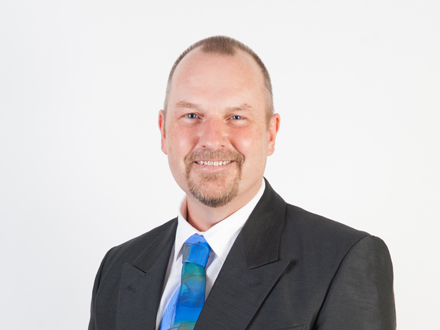Mater coders start e-health ball rolling

As the deadline approaches for the government to launch its personally controlled e-health record program scheme, which will enable any Australian to say yes to a national record that links their medical consultations, Queensland Mater hospitals have been working feverishly to do their part.

Mal Thatcher
(Credit: Mater)
Mater Health Services operates seven hospitals in South-East Queensland. Its Brisbane hospital was one of the sites that received money from the government to be one of the first to try to implement e-health records to integrate with the national system.
Mater Health Services has an obligation under its contract for the funding, which is required to get e-health records running on its systems and hook up to the national system on 30 June. When the organisation signed on, it had been using InterSystems as a platform for its patient administration services.
Now, Mater hoped to tweak the platform to be able to talk to Medicare, fetching health identifiers for its patents. Every Australian has been allocated with a unique health identifier, which will enable the individual entries made by doctors be linked to form a cohesive electronic health record.
"Some of our developers who were expert in terms of the InterSystems platforms had started building some matching algorithms," Mater CIO Mal Thatcher said.
The matching algorithms used a patient's Medicare number to fetch the health identifier, with other details such as gender and address being used to make sure that the right person's identifier had been found.
They had made some progress, developing some worthwhile intellectual property before they decided to bring InterSystems into the development.
"It was a lot easier for InterSystems to do it," Thatcher said. "It was clear there was an opportunity for them to work with us to develop that," he said.
The amendments to InterSystems' platform would then be made available to other providers.
"We've basically said to InterSystems that any [intellectual property] we've developed, we're hoping for them to share that," Thatcher said.
In return, InterSytems did a better job than Mater Health Services could have done on its own, Thatcher said, helping with the web services required to talk to Medicare. The team's new product was independently audited for compliance with the scheme, receiving the tick of approval in November. In December, the interface went live.
Since then, Mater has been averaging 500 requests a day to Medicare for health identifiers. The match rate of the algorithms is around 87 per cent. To date there are around 16,500 health identifiers attached to health records in Mater hospital systems. When the records were created to which the identifiers were attached, patients were asked whether they would allow the interoperation. However, the identifiers will now be shared between the hospitals.
"We don't need their consent to share the [individual health identifier]," Thatcher said, explaining that the unique identifier, a number assigned to each person, was not opt-in, as having an e-health record will be.
The next step for Mater is to enrol patients into the e-health record scheme and enabling the sharing of these records between the hospitals and GPs through point-to-point sharing. Mater is focusing on antenatal obstetrics patients. There will be a portal for patients to access their information and one for doctors.
Mater Mothers' Hospital
(Credit: Mater)
Mater will test the InterSystems' newly developed secure messaging service (developed using NEHTA standards) in April and hopes to start enrolling patients at the end of that month. The system needs to be up and running with records being shared between clinicians by 30 June, when Mater will turn on the capability to push information to a national level.
Thatcher said that the 30 June time frame was aggressive, but that his team was on track. He said the technology wasn't that difficult, the real problem was change management and project management. "It's the people," he said.
Thatcher has been sharing his experiences with other wave two sites, especially St Vincent's in Sydney.
On lessons learned from the process, Thatcher said: "I think the Commonwealth would appreciate that the aggressive time frames were perhaps a little unrealistic."